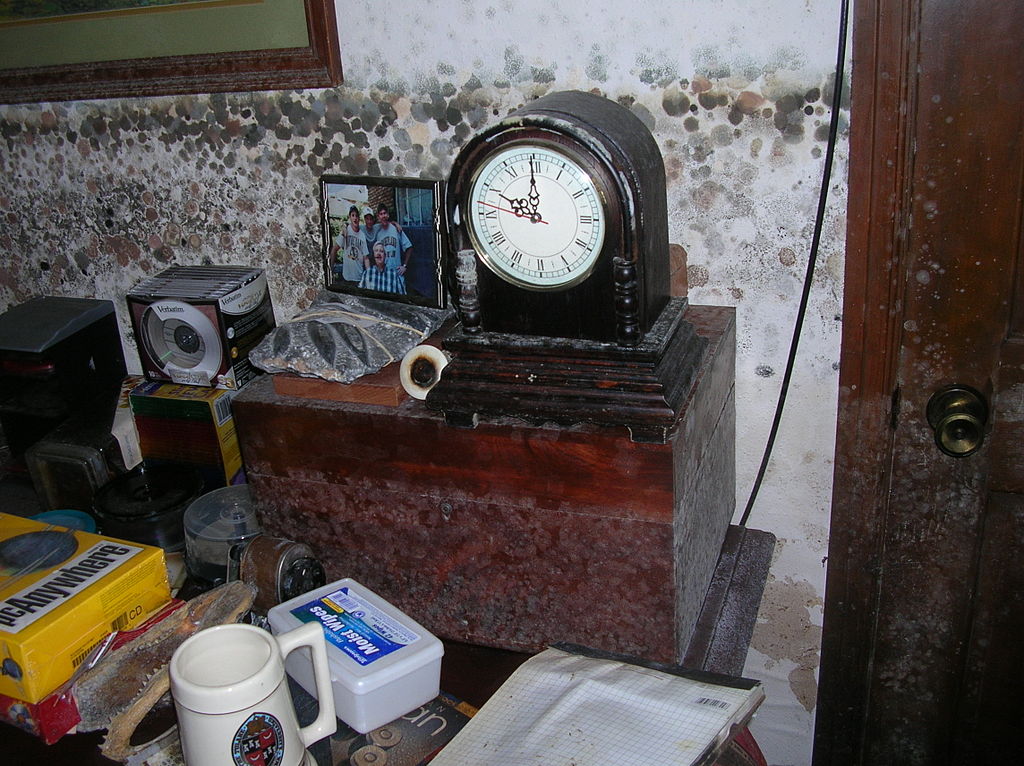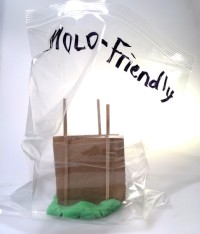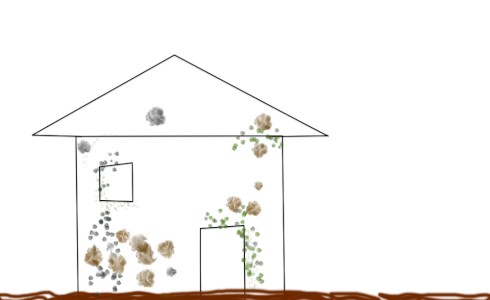Grade Level
6 - 8
minutes
Multi-day
subject
Life Science
Activity Type:
Ecosystems, fungi, Engineering design challenge
Superstorm Sandy struck the Northeast United States in late October 2012 with ferocious winds and widespread flooding that heavily damaged homes along the New York and New Jersey coasts. After the storm, an effort began to restore heat and power, and to rebuild homes damaged by water and wind. But recovery was more difficult than anyone had thought thanks to an aggressive and dangerous enemy: mold. It started to destroy homes even as they were being repaired. In addition to discoloring walls and staining floors, mold and mildew can cause health problems such as allergies, eye and lung irritation, headaches, and rashes. Mold and mildew can also spread over time, and as they do, they can digest and destroy the materials they grow on.
Mold (called mildew in its early growth stages) is actually made up of tiny living organisms in the fungi kingdom—that’s the same kingdom where you’ll find mushrooms and yeasts. Like all living things, mold needs food, water, shelter, air, and space to survive and reproduce. But unlike humans’ many resource needs, such as food from plants and animals, buildings for shelter, and clean water, mold can get all of those things from just one place: wet, organic material. To mold, almost any natural material, whether it’s wood, a dead animal, or the bread on your table, makes a perfect habitat.

Floods and hurricanes can fill a home with dirt and water—a perfect habitat for mold. With climate change threatening increasingly severe weather and flooding, we need to figure out how to build homes that are more resistant to mold. If your home suffered severe water damage, which building materials and furniture would you need to remove first to avoid a mold catastrophe? The couch, the fridge, or the wall coverings? In this experiment, you’ll simulate a flood to test your predictions about which building materials encourage mold growth, and which ones will slow mold down.
Materials

- 2 one-gallon plastic zipper baggies per experimenter
- 1 roll duct tape or packing tape
- A mixture of 3” x 3” squares or “walls” cut from two or more of the following materials: cardboard, overhead transparencies, plastic foam plates, aluminum foil folded into two-ply squares, paper plates
- A supply of two or more of the following kinds of “insulation”: cotton balls, polyester stuffing or synthetic “cosmetic puffs” (synthetic cotton balls), loose wool stuffing (note that some students may have wool allergies), foam peanuts, shredded sponge or loofa, paper towels
Note: Do not provide steel wool, fiberglass, or home insulation that can be purchased at a homebuilder supply store for this activity because they may be skin, eye, and/or upper-respiratory irritants! - A collection of two or more kinds of sticks or “frames,” preferably a combination of natural and manmade materials: plastic stir-sticks, toothpicks, twists of aluminum foil, tongue depressors, straws, etc.
- Permanent marker
- Two quarter-sized lumps of modeling clay (used to secure walls to baggie bottom) per experimenter or per baggie
* Instead of play dough, use an oil-based modeling clay that will not dissolve in water. - Dirt or soil in a large waterproof container such as a paint bucket or milk jug with the top cut off
*Potting soil often contains anti-fungal substances that will prevent your experiment from growing mold. To make this experiment authentic, use the dirt you find outside. - Water and measuring cup
Safety Note
Though molds and mildews are naturally found in nearly every ecosystem on the planet, molds do produce spores, which can be respiratory irritants or cause allergic reactions in some students. The materials produced in this activity should be kept sealed, and never opened by students for observation. Safely dispose of the products of this lab by tossing the sealed bags directly into the trash bin.
Predict which household building materials will support mold growth.
- Read the descriptions of building materials in this building materials descriptions sheet.
- Which ones will soak up water and stay moist like a sponge?
- Which materials are made of plant and animal materials that provide a good habitat for mold and mildew?
- Take a moment to predict which common building materials will not get moldy after a flood.
Build a mold-resistant and a mold-susceptible “house.”
- With a permanent marker, label one bag “mold-resistant materials” and label the other “mold-friendly materials.”
- Using the materials available to you, select two “walls,” some “insulation,” and two “frames” from your building materials that you think are mold resistant.
- Now select two “walls,” some “insulation,” and two “frames” from your building materials that you think are vulnerable to mold.
- Spread the bottom of the “mold-resistant materials” bag on the table, and press a wad of modeling clay into the bottom.

- Using your mold resistant materials, build a structure inside the baggie by gently pressing your walls and frames into the clay so they stay standing when you let go.
- Next, place some insulation between the walls.
- In your second baggie, build a wall out of the materials that you predict are vulnerable to mold.
- Place your two baggies on a stable surface in an undisturbed area where they can stay for a couple days.
- Take notes. Make sure that you record which materials you used in each of your plastic bags. Use the student planning worksheet to help you.
Flood and Observe
- Create a stock of flood water by mixing 1 cup of potting soil with two cups of water.
- Without lifting the baggies, slowly and carefully pour one cup of flood water into each baggie. It should cover the bottom of each bag, but not knock over or cover your walls.
- Seal the baggie completely, keeping as much air in the baggie as possible. Fold over the top, and seal it with duct tape to keep it airtight.
- Over the next few days, observe and compare the mold growth between your mold-resistant and mold-vulnerable walls.
- As you record your observations, think about these questions:
- Which materials does mold grow on first?
- Which materials don’t seem to get moldy at all? What do those materials have in common?
- What materials would you recommend for building a home in an area where floods are common? Use the building materials list to help you recommend mold-resistant materials.
Additional Resources
Next Generation Science Standards:
MS-LS2-1: Analyze and interpret data to provide evidence for the effects of resource availability on organisms and populations of organisms in an ecosystem.
MS-LS2-4: Construct an argument supported by empirical evidence that changes to physical or biological components of an ecosystem affect populations.
Educator's Toolbox
Meet the Writer
About Ariel Zych
@arieloquentAriel Zych is Science Friday’s director of audience. She is a former teacher and scientist who spends her free time making food, watching arthropods, and being outside.
